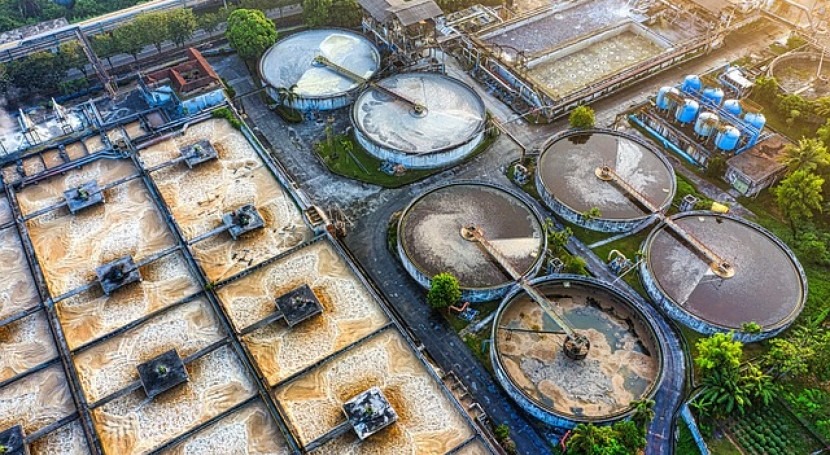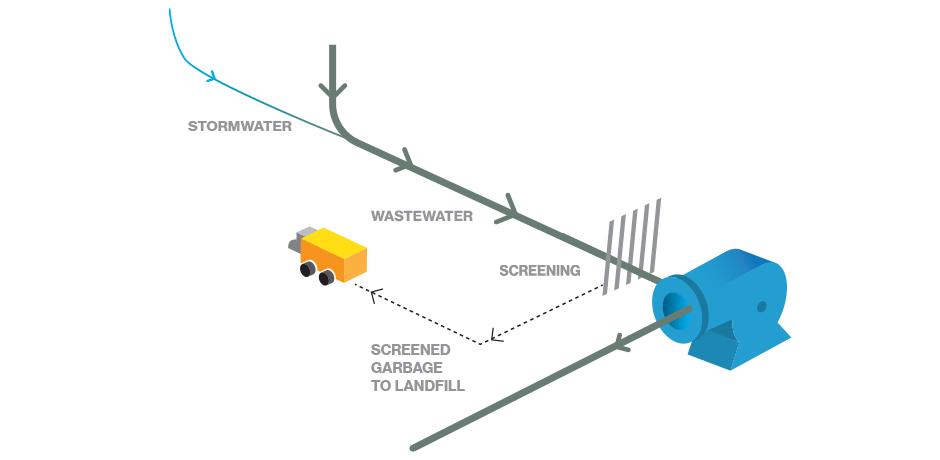Exploring the Role of Biotechnology in Waste Water Treatment
Exploring the Role of Biotechnology in Waste Water Treatment
Blog Article
Optimizing Waste Water Therapy Procedures: Approaches for Improved Water Quality and Resource Recovery
In the world of wastewater therapy, the pursuit for boosting performance and sustainability through procedure optimization is an ongoing search that holds enormous importance. From advanced technologies to cutting-edge resource healing techniques, the landscape of wastewater treatment is advancing swiftly.
Relevance of Refine Optimization
Enhancing waste water treatment procedures via meticulous procedure optimization is crucial for taking full advantage of effectiveness and making sure environmental sustainability. By fine-tuning each step of the treatment procedure, from preliminary intake to final discharge, water treatment centers can achieve higher levels of pollutant removal, lower power intake, and reduce the generation of waste spin-offs. Process optimization involves examining essential performance signs, such as hydraulic retention times, sludge retention times, and nutrient degrees, to recognize locations for renovation and apply targeted services.
Efficient process optimization not just improves the total efficiency of waste water therapy plants however likewise adds to set you back financial savings and governing compliance. By maximizing processes, operators can attain greater treatment capabilities without the demand for considerable infrastructure financial investments. In addition, boosted therapy efficiency causes cleaner effluent discharge, lowering the environmental effect on receiving water bodies and communities.

Advanced Therapy Technologies
In the world of waste water therapy, the execution of innovative therapy innovations plays a critical duty in boosting the general performance and effectiveness of the therapy procedures. These advanced innovations supply ingenious solutions to resolve complicated pollutants existing in wastewater streams, ensuring the removal of contaminants to satisfy strict water high quality standards. Advanced therapy procedures such as membrane layer bioreactors, ozonation, progressed oxidation processes, and turn around osmosis allow the comprehensive removal of pollutants, consisting of emerging contaminants like pharmaceuticals and personal treatment items.
Additionally, these technologies help with source recuperation by extracting important products such as phosphorus, nitrogen, and power from the wastewater. Advanced nutrient removal modern technologies can recoup phosphorus and nitrogen for reuse in agricultural fertilizers, while energy recuperation systems like anaerobic digestion can harness biogas for electrical power generation. By including sophisticated therapy modern technologies into wastewater therapy plants, operators can enhance water top quality, reduce ecological effect, and move towards a much more sustainable and resource-efficient technique to wastewater administration.
Source Recovery Methods
Source recovery methods in wastewater treatment procedures play an essential function in making best use of the application of beneficial resources had within wastewater streams. These techniques objective to essence and reuse products such as nutrients, power, and water from the wastewater, transforming what was as soon as thought about waste into valuable sources. One typical resource recovery method is the removal of nutrients like phosphorus and nitrogen from wastewater for reuse as plant foods or in commercial procedures. In addition, energy healing techniques such as anaerobic food digestion and biogas manufacturing aid harness the power capacity of raw material in wastewater to create power or warmth.
Water healing methods, such as membrane layer modern technologies and advanced filtration systems, enable the treatment and reuse of water for non-potable applications like irrigation or commercial procedures. By carrying out resource recovery methods in wastewater therapy plants, not only can valuable resources be conserved and recycled, however the general sustainability and performance of the read treatment procedure can be significantly enhanced. As the emphasis on resource scarcity and environmental sustainability remains to expand, the importance of integrating source healing methods into wastewater treatment procedures ends up being significantly apparent.
Sustainable Practices in Wastewater Treatment
Applying lasting practices in wastewater treatment centers is essential for enhancing environmental stewardship and long-lasting operational efficiency. Lasting practices in wastewater therapy incorporate a series of methods targeted at lessening the environmental influence of therapy procedures while taking full advantage of source healing. One key aspect of sustainable wastewater treatment is the execution of energy-efficient innovations to decrease the carbon impact of therapy plants. This can consist of using renewable resource resources such as solar or wind power, in addition to the optimization of existing processes to reduce energy intake.
In addition, the adoption of sophisticated treatment modern technologies that promote water reuse and recycling plays an important role in lasting wastewater management. By dealing with wastewater to a high standard, it can be repurposed for different non-potable applications, such as irrigation, commercial processes, and even drinkable water production in some instances. This not only conserves useful freshwater sources however additionally decreases the quantity of effluent released into the setting.

Study on Successful Optimization
As wastewater treatment centers increasingly concentrate on lasting practices, real-world study showcasing effective optimization methods work as indispensable models for market development. One such study revolves around the implementation of advanced nutrient removal modern technologies in a local wastewater therapy plant. By integrating organic nutrient removal processes and maximizing functional parameters, the facility accomplished significant reductions in nitrogen and phosphorus levels released into getting waters, eventually enhancing overall water quality.
Another noteworthy situation study involves the assimilation of anaerobic digestion systems in a commercial wastewater therapy plant to improve power healing and resource effectiveness (Waste Water Treatment). Through the food digestion of natural waste materials, the facility not only generated biogas for energy manufacturing however likewise decreased the quantity of sludge calling for disposal. This double advantage not just improved the plant's sustainability efficiency but likewise led to cost financial savings
These effective optimization strategies demonstrate the possibility for wastewater treatment facilities to achieve both ecological and financial advantages with cutting-edge approaches and efficient procedures. By finding out from these study, sector experts can additionally maximize their very own operations to enhance water high quality and source recovery.
Final Thought
To conclude, maximizing waste water therapy procedures with advanced modern technologies, resource recovery methods, and lasting methods is vital for boosting water high quality and maximizing source recovery. Waste Water Treatment. Instance studies have shown effective implementation of optimization approaches in various wastewater therapy facilities. By proceeding to focus on procedure optimization, we can make sure reliable and efficient treatment of wastewater, inevitably causing a more lasting and eco-friendly method to handling water sources
By fine-tuning each action of the treatment procedure, from first consumption to last discharge, water treatment centers can achieve greater levels of pollutant removal, lower power usage, and decrease the generation of waste byproducts.In the world of waste water therapy, the application of sophisticated treatment modern technologies plays a crucial duty in boosting the overall effectiveness and effectiveness of the treatment procedures. By incorporating sophisticated therapy modern technologies right into wastewater treatment plants, drivers can enhance water top quality, minimize ecological influence, and relocate in the direction of a much more lasting and resource-efficient strategy to wastewater management.
By implementing resource recovery techniques in wastewater treatment plants, not just can valuable resources be conserved and reused, however the overall sustainability and efficiency of the treatment procedure can be dramatically enhanced. Sustainable techniques in wastewater treatment encompass an array of approaches intended at lessening the environmental impact of treatment processes while optimizing resource healing.
Report this page